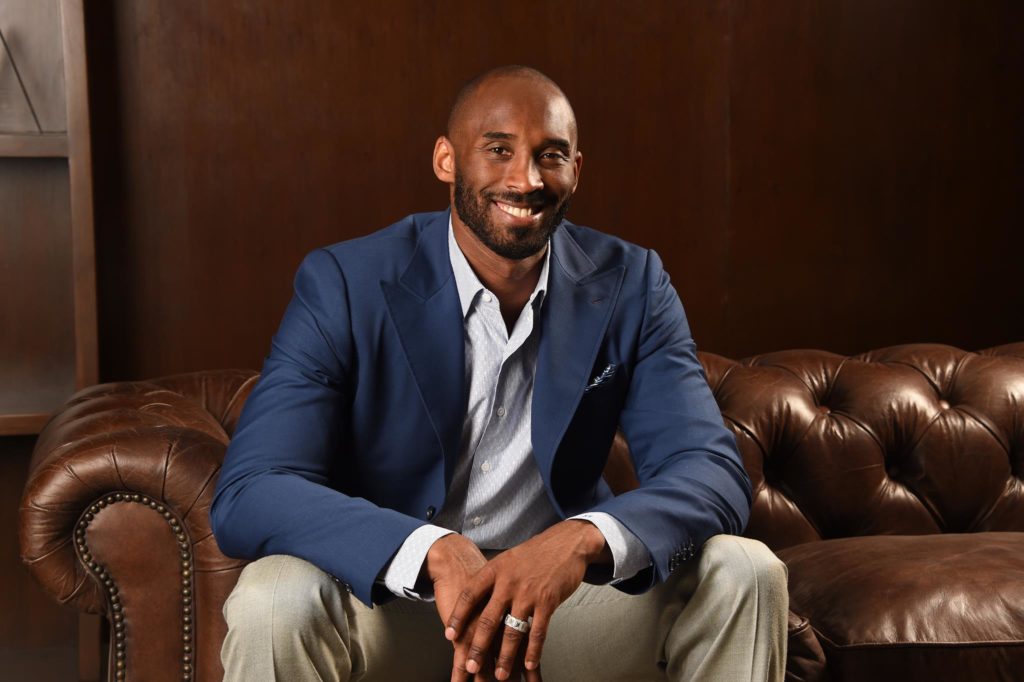Basketball was not a part of Kobe Bryant’s life—it was life.
From being drafted as a flamboyant 17-year-old kid from high school to retiring as a 38-year-old man and sports icon, a ball and a court is all he’s ever known.
The words that were the embodiment of his being—transcendent, clutch, disciplined, killer, winner, G.O.A.T.—were on full display the last time we saw Bryant in the public eye. On April 13, one of the greatest champions of his generation said farewell in what arguably was the most exhilarating retirement performance of all time.
Bryant’s broken down and brittle body battled its way to 60 points in a game that had no implications other than placing a period in his illustrious basketball book. But Bryant does not conform to the uniformity of a script. He did exactly what a writer is mostly advised against doing—he punctuated his career with an exclamation mark for an ending!
His last game was a mirage featuring a sequence of one miraculous shot dropping in after another. He single-handedly willed his team to a come-from-behind win before dropping the mic and exiting stage right with the now-famous phrase “Mamba Out.”
It was a great story.
***
Six months later, Kobe Bryant is seated on stage in a ballroom mere steps away from the Staples Center to a packed house of marketing executives at the &THEN Conference. It’s one of his first post-retirement speaking engagements, and he’s talking about how much he enjoys the process of storytelling.
A year ago this time, he was in preseason mode prepping for the final chapter of his Los Angeles Lakers career. Now he’s dressed in a designer suit and full beard, dropping knowledge about investments, marketing and branding as if it were uncontested jump shots.
The second act of Bryant’s career officially started a day before his 38th birthday in August when he rang the opening bell on the New York Stock Exchange and announced a $100 million fund to drive media, technology and data companies.
Announced @BryantStibel investment platform to the world today with my partner @Stibel and our team on the @NYSE pic.twitter.com/Yy2yF34INH
— Kobe Bryant (@kobebryant) August 22, 2016
Meet Kobe Bryant, the Hall of Fame-bound basketball player who is recreating himself as a venture capitalist businessman.
“I want to try and help put entrepreneurs in the best possible situation to be successful,” he says. “That’s all it is—and it starts with the entrepreneur, and them having a vision on how to make the world a better place.”
As part of Kobe Inc., Bryant’s current investments include sports media website The Players Tribune, video game designer Scopely, legal-services company LegalZoom, telemarketing-software firm RingDNA, home-juicing company Juicero, T-shirt company Represent, Chinese e-commerce company Alibaba, and VIPKid, a company that provides a North American school experience to children in China. Bryant officially made his first ever investment in the sports drink BodyArmor when he was recovering from a torn Achilles tendon in 2014.
The NBA’s third all-time leading scorer is trying to become the second coming of Magic Johnson and Michael Jordan—two hoops predecessors who’ve made more money off the court as savvy businessman than they ever did on it. If Kobe plays the startup scene to precision, he could join their ranks, too.
Bryant spoke on stage about how he’s tackling his newfound passion for business, storytelling and creativity with the same intensity that he did as a five-time NBA champion. Here are the highlights of the conversation, as told by Kobe himself.
***
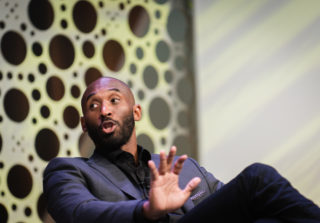
On finding his post-basketball identity …
“At around the age of 20, I understood that basketball is not going to be here forever, so it was about figuring out what was going to happen when the [retirement] time comes. The hardest part is figuring out what the passion is going to be. I thought it was important to start at an early age to try and figure out what I’m passionate about and a chance to try things out. It took me about 15 years to finally figure it out. I didn’t know how long I was going to play for. You have to challenge yourself to grow and evolve—with athletes in particular. It’s easy for us athletes to lose our identity. It’s a dangerous zone to be in. It’s common sense for me to go with the same intensity, attention to detail and curiosity. I want to be better now than I was in my previous career.”
On what he wants to accomplish with his $100 million investment fund …
“The entrepreneurs need to have the passion first, and if the product they are creating has a true purpose for existing in the world, you have to start there. We just want to help them be successful.”
On what the Kobe Inc. brand narrative will be …
“We try and help people reach their maximum level of potential. ‘Storytelling,’ along with ‘big data’ are extremely overused words. What we want to do with our stories is have the viewer internalize it. Can we bring out compelling content that moves you in a certain way, where you see yourself through the lens of the story we are creating? If we can do that at Kobe Inc., we’ll be very, very happy.”
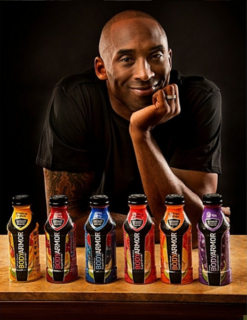
On investment strategy …
“We’re flooded with requests every single day, and a lot of the times, it’s relationships. There are certain things that we want to get to. We have to pace those out. We have to have absolute focus. There are other things that are going to come, but that’s way down the road. We have to have a very sharp lens, because we can’t do so many things. That’s the hardest part when we first started. We had so many people coming from different angles with lucrative offers but they were small-window opportunities. The hardest part has been pushing those to the side and going for things that have a much longer tail, which is risky. But it’s the best way to go about it.”
On his relationship with business partner Jeff Stibel …
“I’m the creative side of the brain. He’s the execution side of the brain. When we look at deals, I’ll start by formulating my mind on where the story of the company can go, and what’s the trajectory of this company from a public standpoint. What could it communicate? What services are they providing that connect to the human nature of us all? How can you connect those dots? That’s what I really love doing.”
On failure …
“I don’t think about it, honestly. I’m aware of [other athletes’ business failures.] I pay attention and try to learn from them. But I could really care less of what others think of my businesses. The focus must be on the work, on the craft, and what it is I’m doing on a daily basis. It’s not about a conversation of trying to convince people that ‘this is going to be a success.’ . . . As an athlete, the most important thing is staying away from things I don’t understand. I’m not going to sit here and say ‘I read balance sheets all day.’ I don’t have the mental stamina to do that. You have people that you trust, and you need to build those relationships. If you invest in the people, it tends to pay off.”
On Los Angeles opening access to creative opportunities …
“I literally was never around it. It’s really weird. I didn’t go to awards show or anything. It was 100 percent basketball. I was completely focused on the game. It just so happened that my passion is what this city is known for. I just kind of fell into it. Is that strange?”
On how he communicates with business leaders and builds relationships …
“I just pick up the phone out of the blue and cold call people, like there’s nothing in particular, I just want to talk. I’ll get a lot of ‘what the hell are you calling me for?’ [I’ll ask them to] explain to me ‘how you see your business. How you operate? How does it connect to basketball? Is there something there that I could learn that can be used when I step out on the court?’ If a question comes up, I have to know the answer. There are lessons that surround us. All we need to do is open our eyes and look. Curiosity is the most important thing. It sounds really weird to say, but I learn leadership lessons just from walking in the park and observing nature, and the sun’s relationship with nature, the sun’s relationship with the moon, and the sun understanding when to be present and when to go away. . . . I like talking. I like getting to know the process and the journey. It is more so learning by sitting down and having an open conversation. Just talk. Ideas tend to emerge naturally. But you start with the truth, and the idea comes from that, and that’s when you have an idea that lasts forever.”
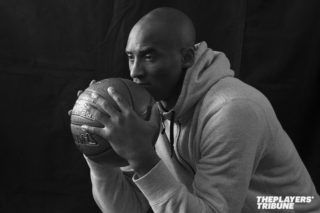
On having access to anyone he’d like …
“The stories have to be good. You can have access and get on the phone with anybody but if the idea isn’t there, if the core of the story isn’t there, if the characters aren’t there, nobody is going to do business with you. You’ll wind up having a lot of meetings and nothing gets executed. So it all comes back to the truth of the story. Is it good? If it is, I’m sure we’ll be doing business.”
On working on Nike’s marketing and advertising campaigns …
“Nike is such a great company. The truth of their company, as told by Phil Knight, is ‘listen to the voice of the athlete.’ It just so happened that I had an itch for marketing a story as it related to advertising the products and innovation. I was able to start the storytelling process, and building out campaigns. I started writing quite a few of them and just started building them year-by-year. That’s where the itch came from. I never thought that I’d actually be doing this, but life will surprise you sometimes.”
On investing into eSports …
“We are talking about eSports virtually every single day. I’m sure there is a move to be made there. We’re just being very patient right now for the dust to settle to figure out the best move. . . . ESports is entertainment. You’re still watching a competitive thing.”
On investing into virtual reality …
“The VR space is a very interesting one in terms of where it could go, and the potential that it has, and the tool that it could be used for, particularly as it relates to sports. It has compelling educational components, and simulating certain schemes and strategies. It can also be used for storytelling to explain different points of view, with one narrative thread, taking place at the same time. There’s a big runway there, and I’m very curious about where it goes. The sound is really the biggest factor of VR, because sound is so impactful. When you’re watching a movie, the sound is what’s drawing you in. Right now, VR is not there yet. I feel like if we can add that, it has a potential to be something special.”
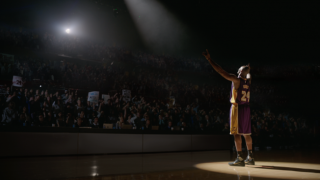
On being known as a basketball player versus a businessman …
“It’s fine with me. Certain people identify with me from that lens, and always will. I’m totally cool with that. I invested a lot of time to make sure the first career was a successful one. At the same time, it’s part of the challenge. The focus is not to one-up what I did before. It’s simply to continue to scratch that daily itch that I have every day and see where that leads. That’s what I’m focused on.”
On the day of his final game …
“Not too many people know this, but I was at the office editing stories from some very talented writers. I wanted to see them finished. I was at the office until about 4-to-4:15 p.m., and I lost track of time and I’m like ‘I have to go home’ as I am sitting there. I went home, showered, changed, and flew down to the game. I played the game, came home, hung out with family, woke up the next morning, worked out, went back to the office, and finished editing the stories. I really love the process of storytelling.”
On still being a fan of the NBA …
“I get in trouble for saying this all the time but we need to figure out a way with our broadcast partners to make sure a game is not five hours long. I can’t do it. I’ll sleep like an hour into it. We need to make it a little bit more efficient, and maybe I’ll watch a little bit more. But I like watching the playoffs. It’s better now because I don’t have to watch from a studying and dissecting point of view. I’m not filing anything away to use later. I just simply watch it, and enjoy it.”
On having the itch to play this season …
“It’s weird, but not even anything at all. It’s really strange. It’s bizarre. I never would have thought that would have even been possible years ago. But there’s no desire to play. Not even a little bit. . . . It’s still kind of weird to sit here today and realize that I played for 20 years. It’s kind of crazy. I get asked all the time now, ‘do I miss it?’ I’m like, ‘dude, I played for 20 years. There’s no more juice left in that orange to squeeze. I’m done.’”
Follow Manouk Akopyan on Twitter @Manouk_Akopyan
